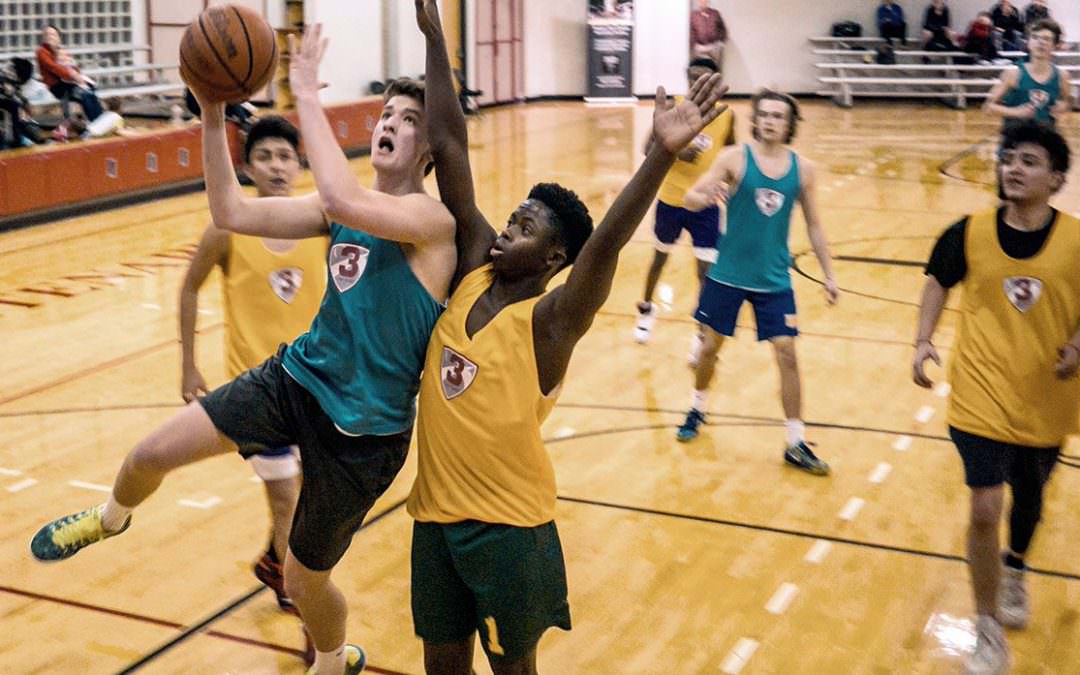As a large portion of the nation’s attention turns to the “March Madness” NCAA Men’s Basketball Tournament in the coming days, now is an ideal time to educate fans, young competitors and even blue-collar workers about an injury prevalent in jump-heavy activities: jumper’s knee.
Among the most common injuries in sports, jumper’s knee is an overuse injury that can develop when one repeatedly jumps and lands heavily. Known in the medical community as patellar tendonitis, it affects 25 to 32 percent of basketball players and 30 to 51 percent of all volleyball players, according to a 2009 review.
Jumper’s knee develops when the patella tendon – the tendon that connects your kneecap to your shinbone – becomes overstressed Over time, a lot of strenuous jumping and landing can overstress the tendon, leading to the development of tiny tears in the tissue that can cause inflammation, pain and a weakening of the tendon.
It’s an injury that can heal quickly, but without rest, repeated strain can worsen the condition.
Initially, the sufferer will typically feel the pain just below the kneecap during use or after a workout. Without rest or treatment, the pain can eventually get worse and start to keep one from practicing, competing or comfortably going about their daily lives.
People who experience the symptoms of jumper’s knee should visit a physical therapist immediately not only to diagnose and treat the injury, but to also develop a personalized regimen to reduce the future onset of patellar tendonitis.
Working with a physical therapist can help athletes and others reduce the following risk factors:
Tight Leg Muscles: According to the Mayo Clinic, tight muscles in the legs – your quads and hamstrings – can predispose a person to developing jumper’s knee. Stretching and flexibility training can help reduce the strain on one’s patellar tendon.
Muscle Imbalance: Imbalances in the leg muscles – say, muscles in the quad are stronger than those in the hamstrings – can pull on the tendon unevenly, making one more susceptible to jumper’s knee. Through an assessment, a physical therapist can identify such muscle imbalances and provide specific strength exercises to establish a better equilibrium in the knee.
Poor Mobility & Technique: Whether jumping, landing, kicking, pivoting or changing direction, using proper technique ensures no one part of the body (i.e., the patellar tendon) is taking on the brunt of the force. Specifically trained in optimal mobility and movement, a physical therapist will identify and fix nonoptimal movement habits to help prevent future injury.
Whether it’s from basketball or volleyball, or from jumping on and off heavy equipment all day on a construction site, jumper’s knee can derail a person from the life they want or need. Fortunately, it’s an injury that’s treatable as well as preventable, often with a little help from your physical therapist.
a large portion of the nation’s attention turns to the “March Madness” NCAA Men’s Basketball Tournament in the coming days, now is an ideal time to educate fans, young competitors and even blue-collar workers about an injury prevalent in jump-heavy activities: jumper’s knee.
Among the most common injuries in sports, jumper’s knee is an overuse injury that can develop when one repeatedly jumps and lands heavily. Known in the medical community as patellar tendonitis, it affects 25 to 32 percent of basketball players and 30 to 51 percent of all volleyball players, according to a 2009 review.
Jumper’s knee develops when the patella tendon – the tendon that connects your kneecap to your shinbone – becomes overstressed Over time, a lot of strenuous jumping and landing can overstress the tendon, leading to the development of tiny tears in the tissue that can cause inflammation, pain and a weakening of the tendon.
It’s an injury that can heal quickly, but without rest, repeated strain can worsen the condition.
Initially, the sufferer will typically feel the pain just below the kneecap during use or after a workout. Without rest or treatment, the pain can eventually get worse and start to keep one from practicing, competing or comfortably going about their daily lives.
People who experience the symptoms of jumper’s knee should visit a physical therapist immediately not only to diagnose and treat the injury, but to also develop a personalized regimen to reduce the future onset of patellar tendonitis.
Working with a physical therapist can help athletes and others reduce the following risk factors:
Tight Leg Muscles: According to the Mayo Clinic, tight muscles in the legs – your quads and hamstrings – can predispose a person to developing jumper’s knee. Stretching and flexibility training can help reduce the strain on one’s patellar tendon.
Muscle Imbalance: Imbalances in the leg muscles – say, muscles in the quad are stronger than those in the hamstrings – can pull on the tendon unevenly, making one more susceptible to jumper’s knee. Through an assessment, a physical therapist can identify such muscle imbalances and provide specific strength exercises to establish a better equilibrium in the knee.
Poor Mobility & Technique: Whether jumping, landing, kicking, pivoting or changing direction, using proper technique ensures no one part of the body (i.e., the patellar tendon) is taking on the brunt of the force. Specifically trained in optimal mobility and movement, a physical therapist will identify and fix nonoptimal movement habits to help prevent future injury.
Whether it’s from basketball or volleyball, or from jumping on and off heavy equipment all day on a construction site, jumper’s knee can derail a person from the life they want or need. Fortunately, it’s an injury that’s treatable as well as preventable, often with a little help from your physical therapist.
